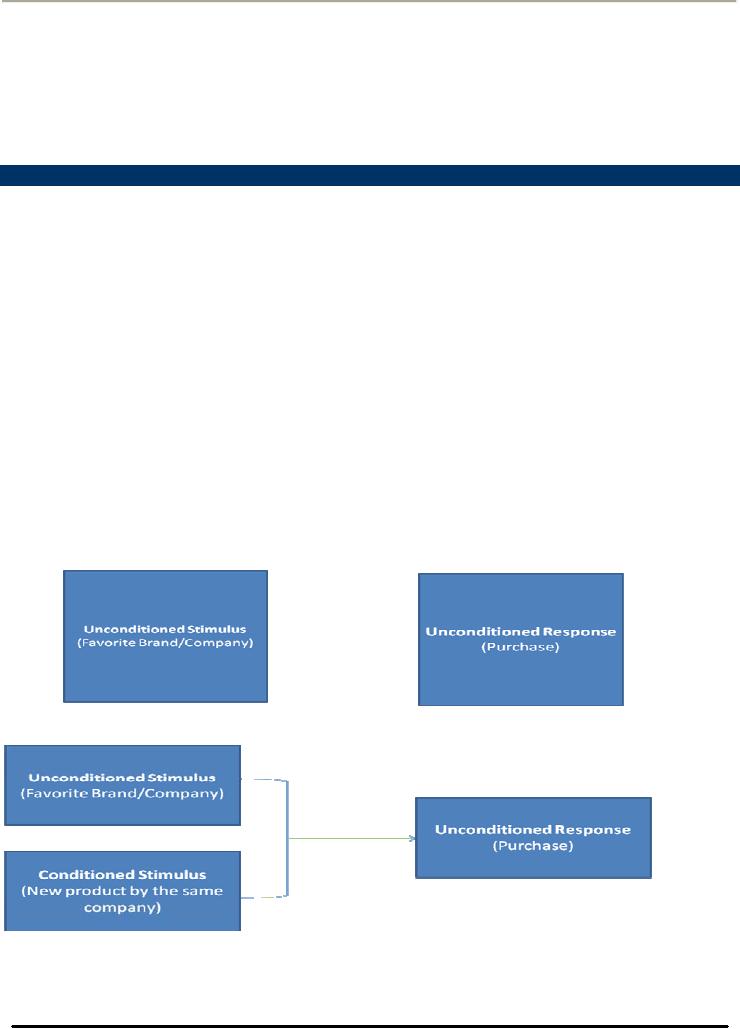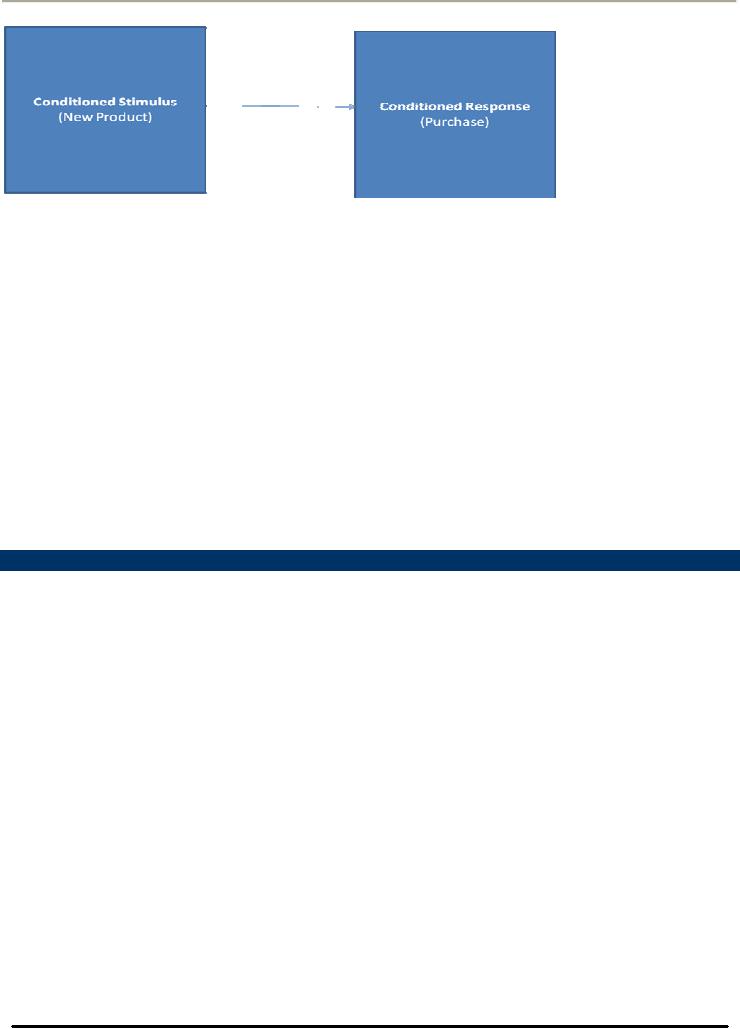 |
ATTITUDE FORMATION AND CHANGE:How attitudes are learned? |
| << ATTITUDES:Characteristics of Attitudes, Attitudes have consistency |
| ATTITUDE CHANGE STRATEGIES:Resolving two conflicting attitudes >> |

Consumer
Psychology (PSY -
514)
VU
LESSON34
ATTITUDE
FORMATION AND CHANGE
CHAPTER
5: INDIVIDUAL DETERMINANTS OF CONSUMER
BEHAVIOR
Understanding:
·
Attitude
Formation
·
Attitude
Change
Attitude
Formation
How
do people, especially young people form
their initial general
attitudes towards clothing they
wear, e.g. casual
wear,
and business attire? How do
they form attitudes towards
certain brands of clothing? How do
friends and
family
members come to admire
certain celebrities? Why some attitudes
do seem to persist infinitely
while others
change
fairly often?
Our
examination of attitude formation is
divided into three
areas:
How
attitudes are
learned?
Sources
of influence on attitude
formation?
Impact
of personality on attitude
formation?
How
attitudes are
learned?
Attitude
formation refers to the shift
from having no attitude toward an object
to having some attitude toward
the
object.
The shift from no attitude
to attitude formation is the result of
learning.
Consumers
often purchase new products
that are associated with a
favorably viewed brand. Their
favorable
attitude
toward the brand is the result of
repeated satisfactions with
other products produced by the
same
company.
The behavior can be explained in
terms of classical
Conditioning
Stage
1
Stage
2
Stage
3: After Repeated Pairings
112

Consumer
Psychology (PSY -
514)
VU
Attitude
Formation without Prior
Knowledge
Sometimes
consumers purchase a product
without prior knowledge or attitude
towards it e.g. the last
bottle of
aspirin
on the gas station min
mart.
Consumers
Experiments
Sometimes
consumers make trial
purchases of new brands from
product categories in which they
have little
personal
involvement. If the find the purchased
brand to be satisfactory, they are likely
to develop a favorable
attitude
toward it
Information
about the Products
In
situations in which consumers
are seek to solve a problem
or satisfy a need, they are
likely to form
attitudes
(either
positive or negative) about products on
the basis of information exposure
and their own
cognition
(knowledge
and beliefs). The more
information consumers have about a
product more likely are they
to form
attitudes
toward it, either positive or
negative. Regardless of available
information consumers are
not always ready
or
willing to process product
related information
Formation
of attitudes is strongly influenced by consumers'
personal experience, influence of family
and friends
and
direct marketing of the companies.
Strategies
of Attitude Change
Much
of is true about attitude formation is
also true about attitude change.
Attitude changes are learned
and
influenced
by personal experience, sources of
information, and personality.
Altering
consumer attitudes is a key
strategic consideration for marketers.
Marketers who are fortunate enough
to
be
market leaders and enjoy a
significant amount of consumer goodwill
and loyalty the overriding
goal is to fortify
the
existing positive attitudes. The
objective of the competitor marketers is to
change the attitudes of the
customers
of the market leaders and
win them over.
Attitude
Change Strategies available to the
marketers include:
Changing
the consumers basic motivational
function
Associating
the product with admired
group or events
Resolving
two conflicting
attitudes
Changing
consumers beliefs about competitor's
brands
1.
Changing the consumers basic
motivational function
An
effective strategy of changing consumer
attitudes towards a product is to
make particular needs
prominent.
One
method of changing motivation is
called Functional
Approach
According
to functional approach consumers
attitudes can be classified in
terms of four functions:
a)
Utilitarian function
b)
Ego-Defensive Function
c)
Value Expressive
Function
113

Consumer
Psychology (PSY -
514)
VU
d)
Knowledge Function
a.
Utilitarian Function
Certain
brand attitudes are held because of
utility. When a product has
been useful and helpful
for us in the past,
our
attitude towards it tends to be
favorable. One way of changing attitudes
in favor of products is by showing
people
that it can serve a
utilitarian purpose that they
may not have considered.
Dishwashing detergent bar
that
also
keeps the skin of hands glowing
and leaves its refreshing
scent in your hands
b.
Ego-Defensive Function
Most
people want to protect their self
images from inner feelings
of doubt they want to replace their
uncertainty
with
a sense of security and
personal confidence. Some
Ads acknowledge this need of
consumers to increase
both
their
relevance to the consumer and
likelihood of favorable attitude change
by offering reassurance to the
consumers'
self images. For
example
A
retailer of fashion clothing stresses in
its headline:
o
When
I believe in myself everything becomes
possible
A
lighters manufacturing company countering the trends
towards disposable lighters
o
True
love is not
disposable
c.
Value Expressive
Function
Attitudes
are an expression of consumers'
general values, lifestyle and
outlook. By knowing the target
consumers'
attitudes
marketers can anticipate their
values, lifestyles or outlook
and can reflect these
characteristics in their
advertising
and direct marketing efforts. For
example if consumer segments
generally hold a positive
attitude
towards
owning the latest designer
jeans, then their attitudes
towards new brands of
designer jeans are likely
to
reflect
that orientation. Similarly if a segment
of consumers has an attitude
towards being high tech then
their
attitudes
towards thin wall mounted HDTV;s
are likely to reflect this
viewpoint.
114
Table of Contents:
- INTRODUCTION TO CONSUMER PSYCHOLOGY:Consumer Behavior
- INTRODUCTION TO CONSUMER PSYCHOLOGY:Consumer research
- INTRODUCTION TO CONSUMER PSYCHOLOGY:Marketing Mix, Product, Price
- INTRODUCTION TO CONSUMER PSYCHOLOGY:Customer Value, Perceived Value
- VALUE AND RETENTION FOCUSED MARKETING AND CONSUMER DECISION MAKING PROCESS
- CONSUMER RESEARCH:Quantitative Research, Qualitative Research
- MAJOR STEPS IN CONSUMER RESEARCH PROCESS:Design of Primary research
- QUANTITATIVE RESEARCH DESIGNS & DATA COLLECTION METHODS
- QUANTITATIVE RESEARCH DATA COLLECTION TECHNIQUES:ATTITUDE SCALES
- QUALITATIVE RESEARCH DESIGNS & DATA COLLECTION METHODS
- CUSTOMER SATISFACTION MEASUREMENT, SAMPLING, AND DATA ANALYSIS AND REPORTING
- MARKET SEGMENTATION AND ITS BASES:Geographical Segmentation
- BASES FOR SEGMENTATION: DEMOGRAPHIC SEGMENTATION PSYCHOGRAPHIC SEGMENTATION
- BASES FOR SEGMENTATION: SOCIOCULTURAL SEGMENTATION USE RELATED SEGMENTATION USAGE SITUATION SEGMENTATION
- BASES FOR SEGMENTATION: BENEFIT SEGMENTATION:Intrinsic Cues
- BASES FOR SEGMENTATION: HYBRID SEGMENTATION STRATEGIES
- MARKET SEGMENTATION IMPLEMENTING SEGMENTATION STRATEGIES ENVIRONMENTAL INFLUENCES CULTURE
- HOW CULTURE IS LEARNT ENVIRONMENTAL INFLUENCES:Formal Learning
- CULTURE AND ITS MEASUREMENT ENVIRONMENTAL INFLUENCES
- MEASUREMENT OF CULTURE ENVIRONMENTAL INFLUENCES:Consumer Fieldwork
- SUBCULTURE CHAPTER 4: ENVIRONMENTAL INFLUENCES
- AGE AND GENDER SUBCULTURE CHAPTER 4: ENVIRONMENTAL INFLUENCES
- BASES FOR SEGMENTATION: BENEFIT SEGMENTATION:Market Segmentation
- SOCIAL CLASS CHAPTER 4: ENVIRONMENTAL INFLUENCES:Occupation
- CONSUMER SOCIAL CLASSES CHAPTER 4: ENVIRONMENTAL INFLUENCES:Affluent Consumer
- CONSUMER SOCIAL CLASSES CHAPTER 4: ENVIRONMENTAL INFLUENCES:Membership Group
- CONSUMER SOCIAL CLASSES CHAPTER 4: ENVIRONMENTAL INFLUENCES:Shopping Groups
- UNDERSTANDING PERSONALITY CHAPTER 5: INDIVIDUAL DETERMINANTS OF CONSUMER BEHAVIOR
- CONSUMER PERSONALITY, TRAIT THEORY AND SELF IMAGES
- CONSUMER MOTIVATION:Needs, Goals, Generic Goals
- UNDERSTANDING LEARNING:Intentional and Incidental Learning, Implications for Marketers
- INSTRUMENTAL CONDITIONING, INFORMATION PROCESSING AND MEMORY
- ATTITUDES:Characteristics of Attitudes, Attitudes have consistency
- ATTITUDE FORMATION AND CHANGE:How attitudes are learned?
- ATTITUDE CHANGE STRATEGIES:Resolving two conflicting attitudes
- INTRODUCTION TO CONSUMER DECISION MAKING:Decision Complexity
- Problem Recognition, Search and Evaluation and Decision and Purchase
- Decision and Purchase:Consumer Decision Rules, Output, Relationship Marketing
- Decisions Related to Post Purchase:Product Set up and Use
- Marketing Implications of Decisions Related to Post Purchase:Understanding
- Post Purchase Evaluation:Determinants of Satisfaction, Consumer Complaint Behavior
- Post Purchase Dissonance:Dissonance Reduction, Marketing Implications
- Consumerism:Roots of Consumerism, The Nature of Consumerism
- Consumerism – Issues and Responses:Environmental Concerns, Consumer Privacy
- Review – Consumer Psychology Course:Consumer Research, Consumerism